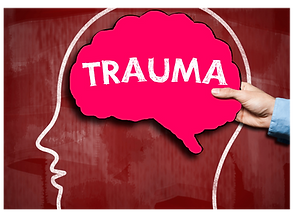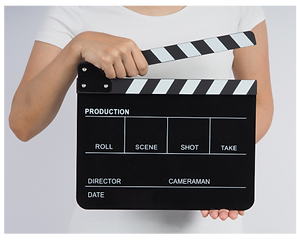Accelerated Resolution Therapy (ART):
A Compassionate and Powerful Healing Approach
What is Accelerated Resolution Therapy?
It’s a unique and powerful type of therapy that uses eye
movements to help rewire the way distressing memories
are stored in your brain—so they no longer feel as
painful or trigger overwhelming physical reactions.
The idea behind it is simple: “Keep the knowledge, lose the pain.”
Unlike traditional talk therapy, this process doesn’t involve a lot of back-and-forth conversation. Instead, your therapist gently guides you to think about the memory in a specific way while your eyes follow a visual stimulus—back and forth—helping your brain process and release the emotional charge.
It’s a surprisingly fast method. While everyone’s experience is different, many people find that even long-held painful memories begin to feel less intense after just a few sessions. In some cases, when someone is ready and the memory is focused, even one 90-minute session can bring a noticeable sense of relief. (Though I always say that gently—everyone moves at their own pace.)

How does it work?
Think of it as giving your brain a “Take 2” on a memory that
didn’t get processed in a helpful way the first time.
Traumatic or highly emotional memories tend to get stored differently
in our brains. They often feel too close, like they’re happening all over
again—triggering the same body sensations, emotions, and even old
thought patterns, even if we know better now.It can feel confusing,
overwhelming, and exhausting.
Accelerated Resolution Therapy (or ART) and EMDR help give the brain a second chance to file that memory away more calmly and clearly.
• The memory becomes something from the past—not something you relive each time it comes to mind.
• It gets stored in a “folder” you can access if you choose, but it’s far less likely to pop up on its own.
• The emotional and physical charge can fade—sometimes even disappear.
• And in some cases, we can even change how the memory looks or feels through a process called image replacement (which I’d love to explain more if you’re curious).
I could honestly talk about this for a while—it’s fascinating and full of hope. But if you’ve been carrying a painful memory that keeps showing up uninvited, there’s help. You don’t have to carry it the same way forever.

Bilateral Stimulation (BLS)
It uses gentle, back-and-forth eye movements called Bilateral Stimulation (BLS)
to help your brain access both logic and emotion while working through a memory.
This allows you to reprocess difficult or traumatic events in a way that feels safer,
less triggering, and more resolved.
You don’t need to share the details of the memory out loud if you don’t want to.
In ART, your therapist gently guides you through short moments of thinking about
the memory while your eyes follow a visual target left to right. This process helps
your brain reorganize how the memory is stored.
In between sets, you take grounding breaks—checking in with body sensations, tuning into the present, and emotionally resetting before moving forward.
The left hemisphere of the brain manages logic, facts, and analysis; the right hemisphere holds images, emotions, and creativity. BLS activates both sides, encouraging the brain to process the memory using its full capacity. This can reduce distress not just cognitively, but in your body too.
And that’s key—memories are stored in the body. Even when you've intellectually processed a painful event, your body might still respond with a racing heart, nausea, or a pit in your stomach. ART helps release those physical sensations. This is often what makes the healing feel so deep and lasting.
A unique part of ART is addressing unmet needs. Many painful experiences leave us with a lingering wish: to have been protected, empowered, rescued, heard, or to have acted differently. In ART, there is space to experience those unmet needs being fulfilled in a way your nervous system can absorb. While we can't change the past, we can change how the past feels.
Another optional piece of ART is image replacement. If there’s a visual from your memory that you can’t get out of your mind, ART allows you to alter it—blurring, dulling, erasing, or even painting over it. You don’t have to carry that image anymore if you're ready to let it go.
Dual Attention plays a big role in how ART works. As you think about the memory, follow the eye movement, and stay aware of your present surroundings, your brain goes into a kind of multitasking mode. This puts pressure on your working memory, making it difficult to hold onto all the emotional details, which leads the brain to store the memory in a less distressing way.
What to Expect from a Session
1st session (Intake):We'll get to know each other, talk about your goals, and decide together if ART is a good fit. We build up your coping skills. Your emotional safety is the top priority, so we make sure you feel equipped and supported before diving in. How many prep sessions we do depends on your readiness, coping tools, and whether you experience things like dissociation.
During an ART Session
* We'll briefly check in to see how you're doing.
* If virtual, we’ll use a screen-based tool with dots you follow. In-person, it may be your therapist’s hand.
* You'll follow the visual movement for about a minute at a time while being guided to focus on different parts of the memory, body sensations, unmet needs, or other healing components.
* We go step-by-step, at your pace, with grounding in between.
* Many clients end sessions saying things like, “It just feels like something that happened, and it’s over.”
After an ART Session
* You may feel emotionally tired. We encourage self-care and offer tips to help you relax and recharge after a session.
What ART Helps With
ART can be helpful for many types of distress, especially:
* Sexual assault or rape
* Physical assault or violence
* Accidents or near-death experiences
* Medical emergencies
* Embarrassment or shame-inducing events
* Getting fired, arrested, or yelled at
* A painful holiday, breakup, or regret
* Witnessing something traumatic
ART is also Effective at Reducing:
* Flashbacks
* Dissociation
* Intrusive images or thoughts
* Nightmares
* Body sensations tied to memory
* Emotional intensity
* Disproportionate emotional responses
* Hyper vigilance or feeling unsafe
* Rumination and sleep disruption
Virtual or In-Person Sessions?
Yes, ART works beautifully both ways. Some people feel more grounded in a therapy office, while others feel more comfortable at home. I’ll help you set up your space if you choose virtual sessions.
Length and Frequency of Sessions
I offer 50-minute and 90-minute sessions. If you’d like to work through one memory in a single session, the 90-minute option is often best. How many sessions you'll need depends on your readiness, the complexity of the memory, and how your system responds—some people feel relief in one session, while others take a few to complete the process.
Therapist Qualifications
To provide ART, a therapist must be:
* A licensed mental health professional (LPC, LMFT, LCSW, PhD, or advanced psychiatric nurse practitioner)
* Trained in Accelerated Resolution Therapy by an approved provider
My background:
* Licensed Professional Counselor (LPC) with a Master's in Professional Counseling and School Counseling
* ART-trained and practicing since January 2025
* Experienced in treating anxiety disorders, trauma, and complex emotional struggles
Evidence-Based
ART is recognized as an evidence-based treatment for trauma. Here is a link of recent publications.
Ready to Begin?
If ART sounds like the right fit for you, I’d love to help. Just fill out my appointment request form, and we’ll schedule your first session. Healing doesn’t have to take forever, and you don’t have to carry this alone.

